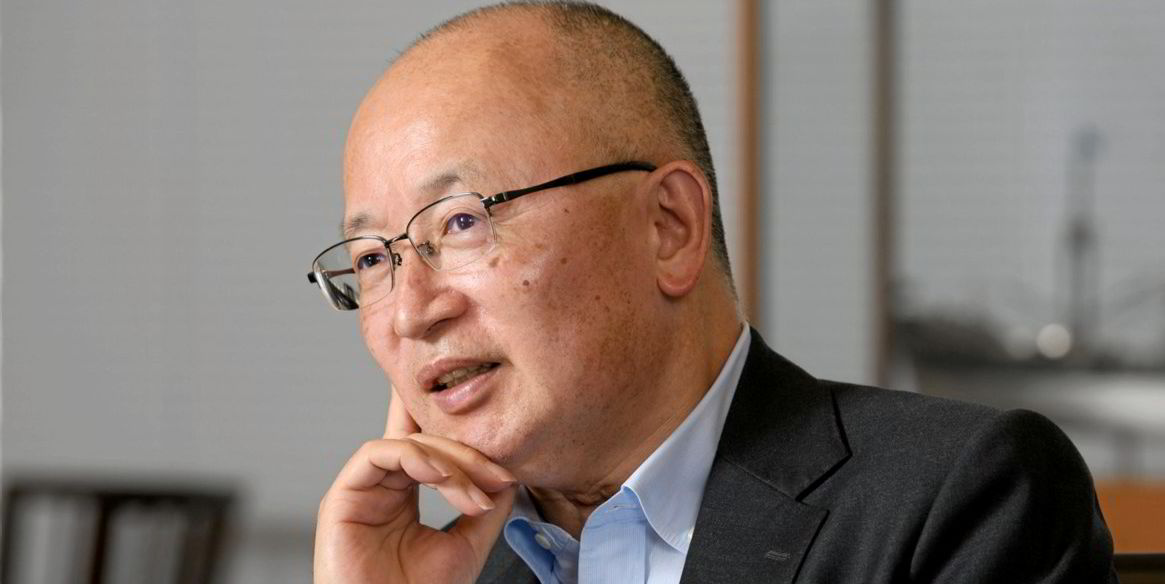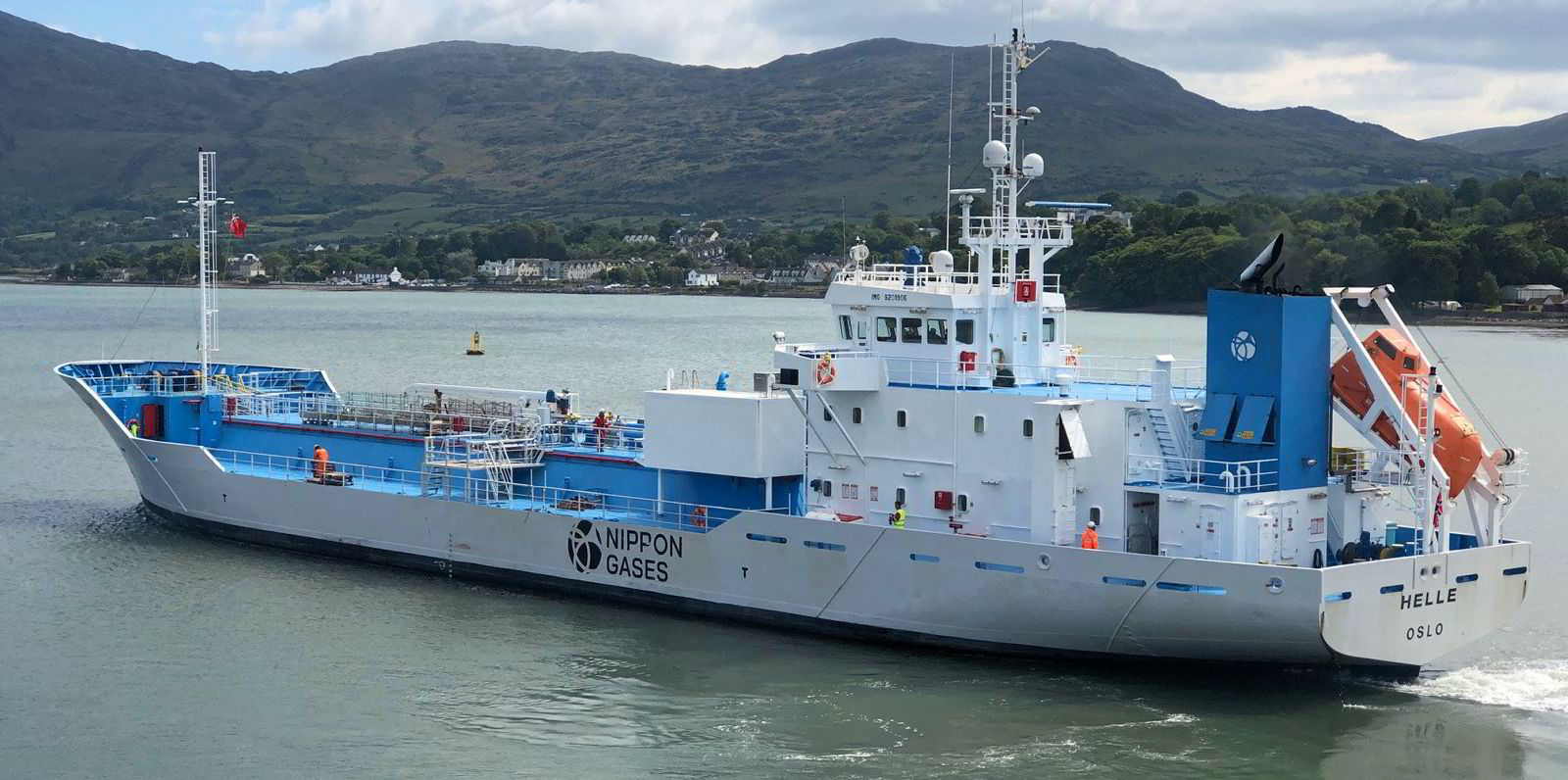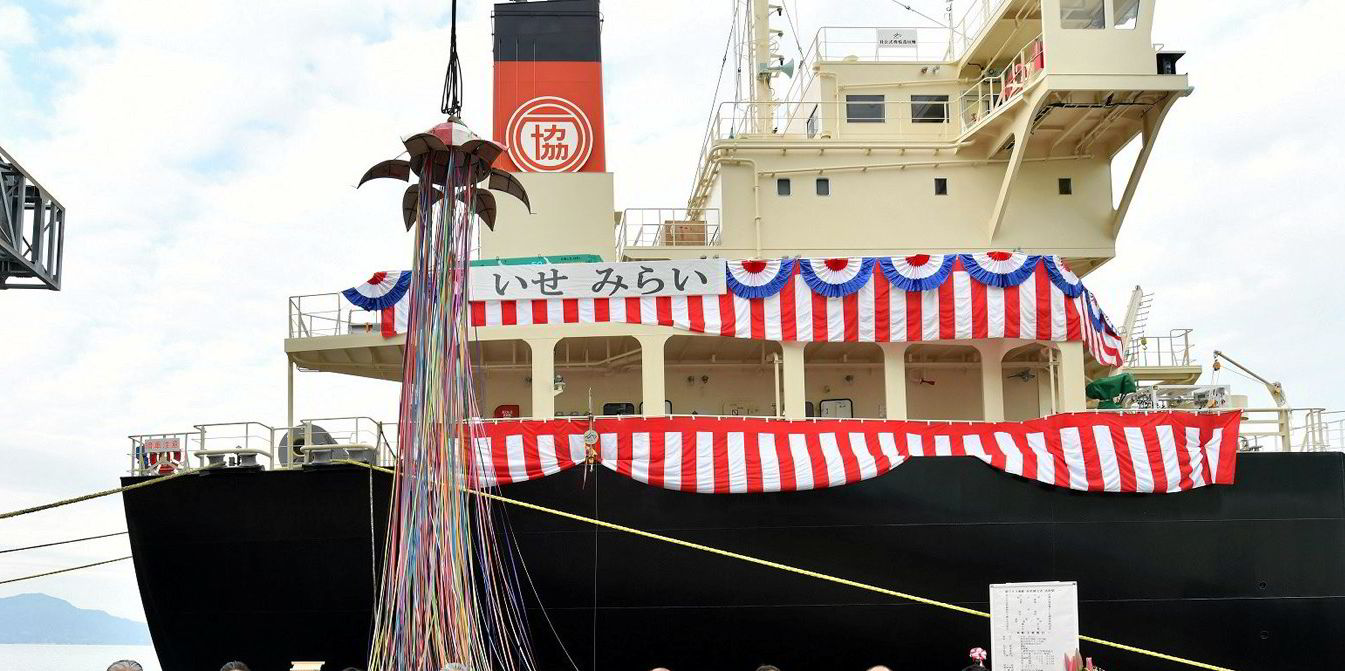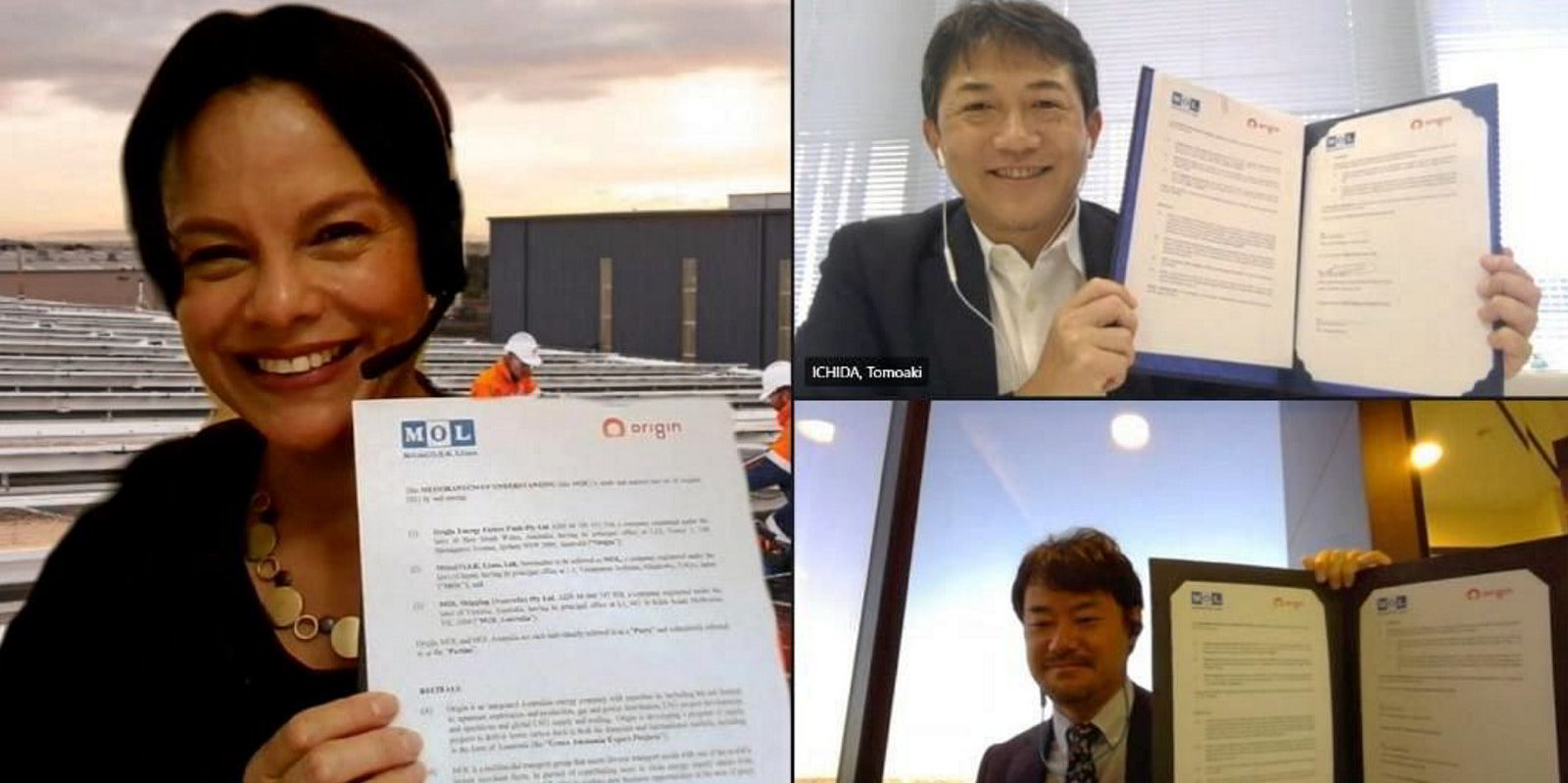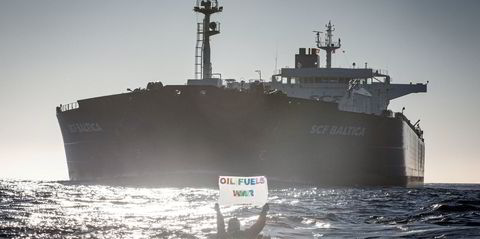Mitsui OSK Lines (MOL), one of the world’s largest charterers, is looking to shipowners to help it foot its ¥1.6trn ($14.5bn) decarbonisation bill.
The Japanese shipping giant expects to make that investment on some 90 LNG-fuelled and 110 next-generation fuel-powered vessels by 2030 as part of its move to net zero carbon target by 2050.
“Our main goal is to achieve net zero greenhouse gas emissions by 2050 and this will include all ships chartered by MOL,” chief executive Takeshi Hashimoto told TradeWinds.
“As MOL cannot achieve this target by ourselves, we will need to charter in vessels from shipowners who share a similar view of this environmental vision. We feel that relationship and partnership with shipowners who can share the view will be the key going forward.”
At the end of the last quarter, MOL controlled a fleet of around 735 vessels. More than 500 of those — almost 70% — were chartered in.
Out of its fleet of 330 bulkers, some 286 — 86% — were chartered in, while 95 out of the 168 tankers it operated — or 56% — were chartered in.
Hashimoto said he also expects the composition of MOL’s fleet to change to reflect the changing sources of global energy.
“Demand for LNG is expected to grow significantly in China, India and South East Asia, while demand for coal is expected to decline gradually,” he said.
“General energy demand in Asian countries is on an increasing trend, and the growth rate of LNG is expected to exceed the shrinking of the coal business.
“We believe bulkers which are engaged in the coal business and tankers carrying oil products will shrink in the future, whereas vessels designed to carry cargoes such as ammonia, methane, hydrogen and carbon dioxide may be on the rise.”
Recent acquisition
MOL is already making investments in this area with its recent acquisition of a stake in Norway’s Larvik Shipping, which specialises in the technical management of liquified CO2 tankers.
In May, the shipowner emerged as the buyer of an LPG carrier sold by StealthGas in April as part of a move to re-enter the ammonia business.
The 35,000-cbm Green Pioneer (built 2010) immediately began a time-charter contract with Trammo, a leading international merchandising and ammonia trading company.
MOL has also recently announced that it was teaming up with K Line to carry out research into the potential for large-scale CO2 carriers as part of a larger Japanese project to reduce greenhouse gas emissions.
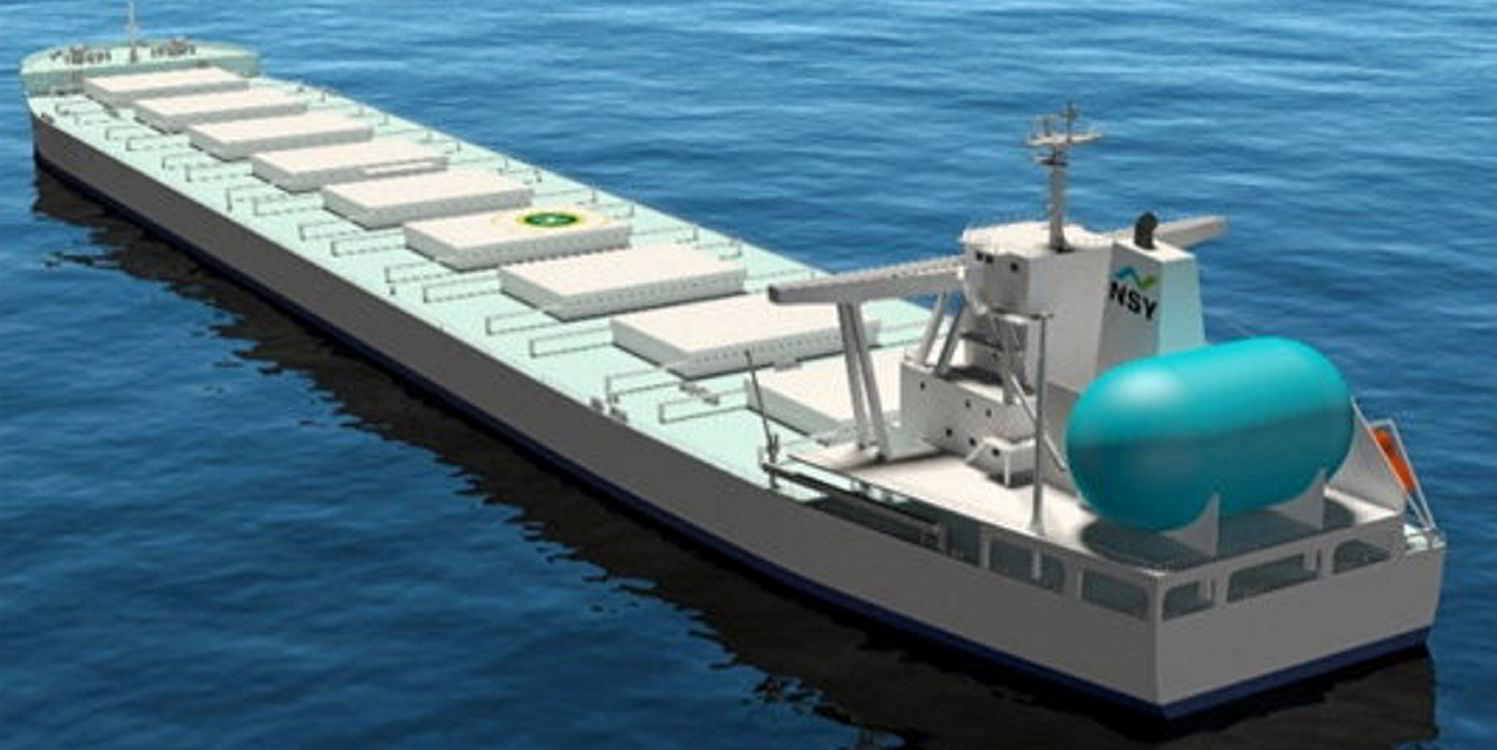
The research is being carried out under the auspices of the New Energy and Industrial Technology Development Organisation, Japan’s national research and development agency.
As for the fuel types MOL will use, Hashimoto said the clean alternative net zero emission fuels that are planned to be used by 2050 are still not fully developed as a technically and economically usable energy at this moment.
“Therefore, we are investing in [a] different possibility of net zero emission fuels to cover multiple options and be ready to use the most realistic and reachable zero-emission energy source in the future,” he said.
Emissions goal
The assumption is the first ammonia-powered main engine will be developed around 2025, and net zero emission vessels equipped with it to start operating by around 2027 or 2028.
MOL also plans to implement an internal carbon pricing system within the current financial year, which ends in March, to promote in-house decarbonisation projects and to prepare for the introduction of systemic carbon pricing.
“This will allow MOL to evaluate the investment decision of each project from an environmental perspective and accelerate the decarbonisation projects,” Hashimoto said.
MOL said many of its customers and business partners were initially sceptical about the implementation and feasibility of its plans for net zero emissions by 2050, even though they acknowledged the need for environmental measures.
However, the shipowner said the world’s situation has changed greatly in the past year and that the Japanese government’s clear policy of net zero emissions was a major factor.
“The world has now started to move in full-scale on tackling environmental issues, and if we remain idle, even our plans may become obsolete in just one to two years,” MOL said. "We will continue to work with this sense of crisis."
